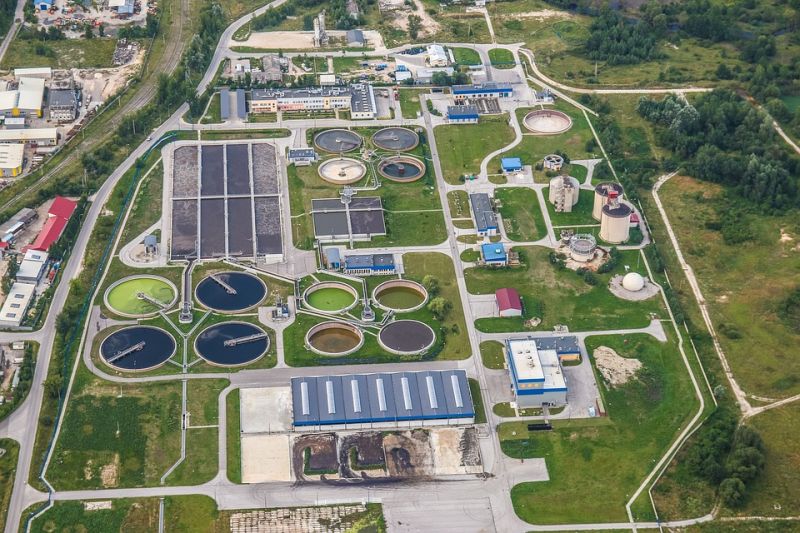Is Bigger Better? Driving Factors of Publicly Owned Treatment Works Performance
Published on by Water Network Research, Official research team of The Water Network in Academic
Cornell scientists have assessed factors to improve, upgrade and make New York’s wastewater treatment plants more robust, according to their work published Feb. 24 in the journal Water Research.
The state’s treatment plants in villages, towns and cities (known as publicly owned treatment works, or POTW’s) face needed repairs, enhancements and sometimes new facilities – all with a price tag of more than $800 million annually, said Brian Rahm, research associate in biological and environment engineering at Cornell’s New York State Water Resources Institute.

Wastewater treatment plant, Representative image, Source: Pixabay
For water treatment facilities across the state, Rahm and his colleagues sought characteristics associated with both good and poor performance.
“When wastewater treatment plants are built throughout New York – which can be small, medium or large – we’re looking for inherent problems that the plants may be introducing into the system that might be impacting our water quality,” said Rahm.
“And if there are problems, can we address it?” Rahm asks. “If we identify factors that lead to poor performance, we address the underlying issues. If we identify factors that lead to a better performance, we look for ways to promote it, find financial incentives.”
The prevailing wisdom is that building bigger wastewater treatment facilities leads to better treatment outcomes, Rahm said. But this new research found that the smaller wastewater treatment facilities achieve lower effluent (sewage discharge) concentrations of total suspended solids, organic material and fecal coliform than the largest facilities.
Medium-sized water treatment plants tend to do the best job treating wastewater across New York, as these facilities are sophisticated enough to include state-of-the-art processes and employ well-trained operators for reliable, high-quality treatment outcomes, the new report said.
From an environmental quality perspective, in this paper, the researchers report concerns for small and large POTW’s.
Municipalities throughout New York will continue to upgrade wastewater treatment plants or build new ones, as needed, but as scientists concerned with treatment there is a need to be realistic, said Rahm.
“We must build facilities along a spectrum of sizes and we must identify factors to encourage those plants to incorporate best practices suitable for their size and operational capabilities when they are refurbished or built.”
Ideally, wastewater treatment engineers will use these results to inform future efforts to best fit the plant configurations to the communities served. “New York could offer financing incentives to municipalities to build a better wastewater facility infrastructure,” said Rahm.
New York’s Clean Water Infrastructure Act of 2017 will invest $2.5 billion in clean drinking water infrastructure projects across the state. The act authorizes the state’s Environmental Facilities Corp., which manages New York’s Clean Water State Revolving Fund, to provide low-cost loans for water quality and sewage treatment infrastructure in villages, towns and cities.
The research, “Is Bigger Better? Driving Factors of POTW Performance in New York,” was co-authored by doctoral candidate Natalie Morse; Michelle Bowen ’16; Jun Choi ’13; Dhaval Mehta ’14, Delft University of Technology, The Netherlands; and Sridhar Vedachalam ’15, Safe Drinking Water Research and Policy Program at Northeast-Midwest Institute.
Funding was provided by Cornell’s New York State Water Resources Institute; the New York State Department of Environment Conservation-Hudson River Estuary Program and the U.S. Geological Survey.
Source: Cornell Chronicle
Paper : Is bigger better? Driving factors of POTW performance in New York
Media
Taxonomy
- Reclaimed Wastewater
- Wastewater Phycoremediation
- Wastewater Treatment
- Wastewater Collection
- Water Supply
- Infrastructure
- Urban Water Infrastructure
- Infrastructure Management
- green infrastructure